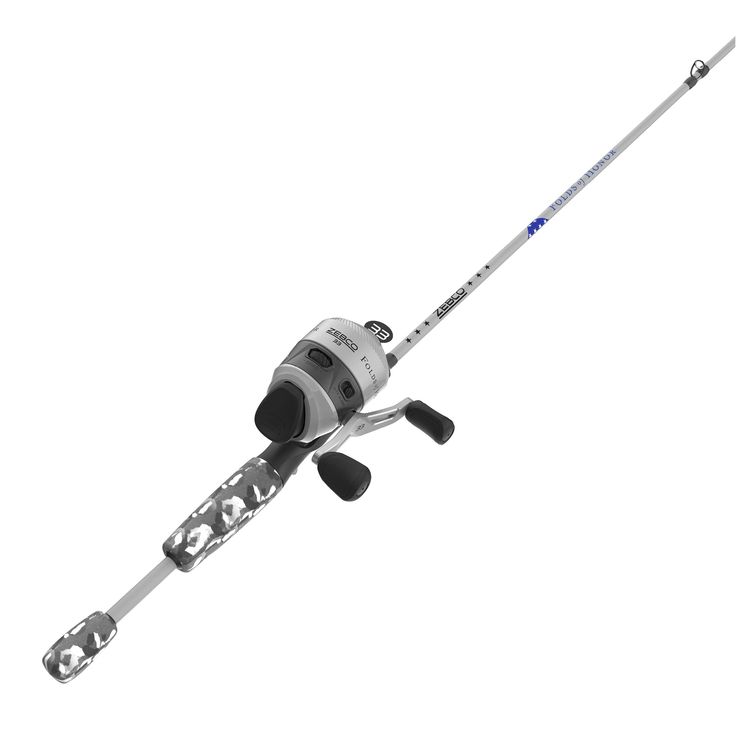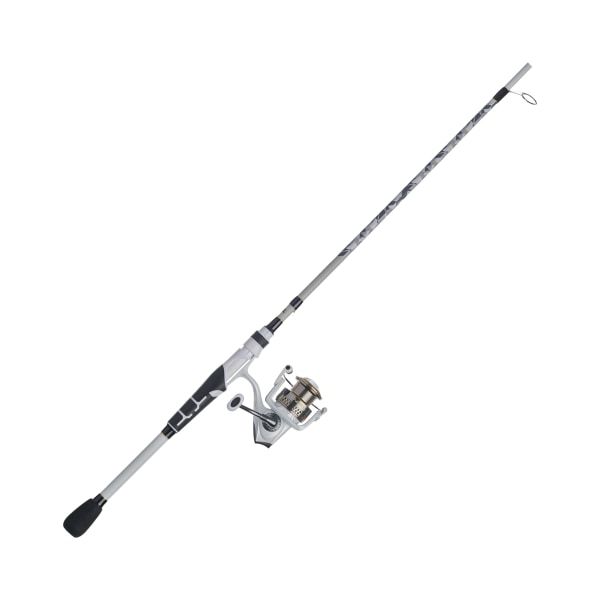Introduction to Fishing Rod Crafting
Fishing is both a beloved hobby and a serious sport. Having the right gear elevates your experience. This guide will show you how to craft a fishing rod that’s both functional and personal. Crafting your own rod adds a touch of pride to every catch. In this section, we’ll cover the basics of what fishing rod crafting entails.
First, know that making a fishing rod is a process that combines art with skill. You’ll choose materials, design your rod, and assemble the parts. The joy of crafting your rod is in the detail and customization. We’ll explore the essential materials and tools you’ll need. We’ll also discuss how to select the perfect rod blank that suits your fishing style.
Remember, learning how to craft a fishing rod requires patience. But once mastered, the skills can lead to creating a variety of rods for different fishing conditions. So, let’s dive into the art of rod crafting and start this exciting DIY journey together. Keep reading to learn the key steps to creating your own fishing rod from scratch.

Essential Materials and Tools
To craft a fishing rod successfully, you need the right materials and tools. Here’s what you’ll need:
- Rod Blanks: This is the backbone of your fishing rod. Choose the length and material that match your fishing style.
- Guides: These small rings guide the line along the rod. You’ll need several, depending on the length of the rod.
- Reel Seat: This secures the reel to the rod. Make sure it fits the rod blank and reel size.
- Handle Material: Options include cork or foam. This choice affects your grip and comfort.
- Thread: For wrapping the guides. Select a color that complements your rod.
- Epoxy Resin: This secures and protects the thread wraps. It also adds durability to your rod.
- Tools: Include a wrapping jig, scissors, and a fine-tip brush for applying epoxy.
Gather these essential materials and tools before starting. They ensure you can craft a fishing rod that’s not only functional but also personalized to your fishing needs.
Selecting the Right Rod Blank
Selecting the right rod blank is a critical step in how to craft a fishing rod. Your choice will affect the rod’s responsiveness and suitability for different types of fish. Think about the fishing you plan to do. For example, shorter blanks work well for small, quick fish, while longer ones offer better casting distance for larger fish.
When choosing a rod blank, consider these factors:
- Length: How far do you need to cast? Longer rods cast further but may be harder to manage.
- Material: Common materials are fiberglass, graphite, and composite. Fiberglass is durable and flexible. Graphite is light and sensitive. Composite is a mix of both.
- Action: This is how much of the rod bends when you apply pressure. Fast action bends mostly near the tip, medium in the middle, and slow action bends closer to the handle.
- Power: This reflects the strength of the rod. It ranges from ultra-light for small fish to heavy for big game.
Look at these factors closely, as they will steer the performance of your custom-made fishing rod. Your choice should align with your fishing style and the type of fish you target. Take your time with this step. The right decision here sets the foundation for the rest of your rod crafting process.

Steps to Crafting the Fishing Rod
Crafting a fishing rod has several key steps. Following these steps carefully will ensure a high-quality finished product. Here’s how to craft a fishing rod in stages:
- Gathering Materials: First, collect all the essential materials and tools listed previously.
- Cutting the Rod Blank: To begin, cut your rod blank to the desired length. Precision is key.
- Smoothening Edges: Next, smooth the edges of the rod blank for safety and comfort.
- Attaching the Reel Seat: Securely attach the reel seat to the rod blank. Make sure it’s stable.
- Adding the Handle: After the reel seat, attach the handle material for a comfortable grip.
- Aligning the Guides: Place the guides along the rod. Ensure they are evenly spaced.
- Wrapping the Guides: Carefully wrap thread around the base of each guide. Keep tension even.
- Applying Epoxy: Use a fine-tip brush to apply epoxy resin over the thread wraps. Let it cure properly.
Each stage requires attention to detail. Make sure to double-check alignments and fittings. With patience and precision, you’ll craft a fishing rod that is durable, comfortable, and provides excellent performance when on the water.
Attaching Guides and the Reel Seat
Attaching the guides and the reel seat are crucial steps in rod crafting. First, lay out the rod blank on a flat surface. Identify the placements for your guides. Space them properly, to ensure smooth line movement during fishing.
Step by Step to Attach Reel Seat:
- Test Fit the Reel Seat: Make sure it fits snugly on the rod blank. It should not move.
- Apply Epoxy: Coat the area of the rod where the reel seat will attach with epoxy resin. Use a fine-tip brush for precision.
- Place the Reel Seat: While the epoxy is wet, slide the reel seat into position.
- Let it Cure: Wait the recommended time for the epoxy to fully cure. This secures the reel seat firmly.
Guide Attachment:
- Mark Guide Positions: Use a pencil to mark where each guide will go. Keep the spacing even.
- Secure Guides with Tape: Temporarily attach the guides using small bits of tape. This holds them while you wrap.
- Wrap the Guides: Secure each guide by wrapping thread around its base. Maintain even tension.
These steps will help you attach guides and the reel seat correctly. They ensure your fishing rod works well and lasts long.

Finishing Touches: Wrapping and Epoxy
After assembling your fishing rod, it’s crucial to apply the finishing touches correctly. These touches not only enhance the rod’s appearance but also preserve its functionality and durability. Here is how you can expertly apply wrapping and epoxy to your handcrafted fishing rod.
Wrapping the Guides:
- Choose the Right Thread: Start by selecting a high-quality thread that complements your rod’s color and style.
- Start at the Base: Begin wrapping at the base of each guide. Keep the wraps tight and even.
- Work Upwards: Slowly wrap the thread upwards, ensuring there are no gaps or overlaps.
- Finish Securely: Tie off the thread securely once you reach the top of the guide. Trim any excess thread.
Applying Epoxy:
- Prepare the Epoxy: Mix the epoxy resin and hardener as directed on the package.
- Apply with a Brush: Use a fine-tip brush to apply a thin, even layer of epoxy over the thread wraps.
- Ensure Coverage: Make sure all surfaces of the thread wraps are covered with epoxy to prevent moisture damage.
- Allow to Cure: Let the epoxy cure fully according to the manufacturer’s instructions. This may take several hours.
These steps are key in how to craft a fishing rod that is both beautiful and functional. Proper wrapping and applying epoxy ensure your rod handles well and lasts longer, even in harsh fishing conditions. Remember, patience and attention to detail during these final steps will greatly affect the quality and performance of your finished fishing rod.
DIY Fishing Rod Customization Tips
Creating your own fishing rod gives you the chance to add personal touches. Here’s how to make your rod unique:
- Choose a Color Scheme: Pick colors that reflect your style. Use them in your thread and handle.
- Add Decorative Wraps: Use different colored threads to create patterns on your rod. This can show off your personality.
- Engrave Your Name: Consider engraving your name or initials onto the rod for a personal touch.
- Select Custom Grips: Choose grips that not only complement the design but enhance comfort.
- Experiment with Handle Shapes: Try different handle shapes to find the one that feels best in your hand.
- Incorporate Symbols: Add meaningful symbols or logos to your rod design.
- Choose Unique Guides: Look for guides that add a distinctive look to your rod.
Remember, these steps in how to craft a fishing rod should reflect your fishing style and needs. Customization not only adds beauty but also makes your fishing experience more enjoyable.
Maintenance and Care for Your Homemade Fishing Rod
Once you have crafted your fishing rod, maintaining it ensures that it will last for many fishing trips. Proper care of your fishing rod involves simple but important steps.
Clean After Each Use:
Wash your rod with freshwater after every fishing trip. Remove salt, dirt, and debris. This prevents damage and wear over time.
Check for Wear and Tear:
Regularly inspect your rod, focusing on the guides and the reel seat. Look for signs of stress or cracks. Address any issues immediately to avoid failures during fishing.
Store Properly:
Keep your rod in a cool, dry place out of direct sunlight. Sunlight can weaken the rod materials. Use a rod rack or a protective cover to avoid bending or scratching.
Lubricate Moving Parts:
Apply a light lubricant to the reel and guides occasionally. This helps them function smoothly and prevents rust.
By following these maintenance tips, you enhance the durability of your homemade fishing rod. Always handle your rod carefully to prolong its life and performance.